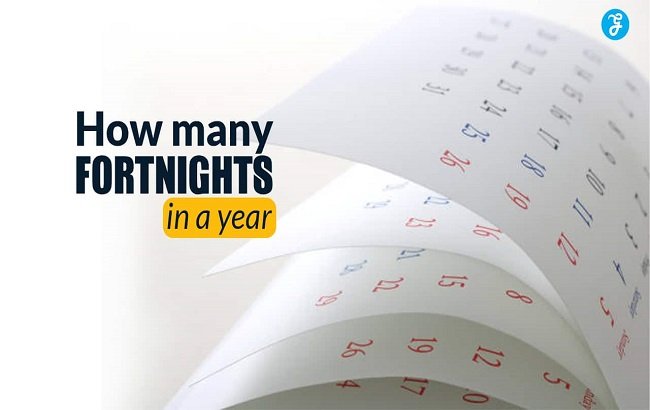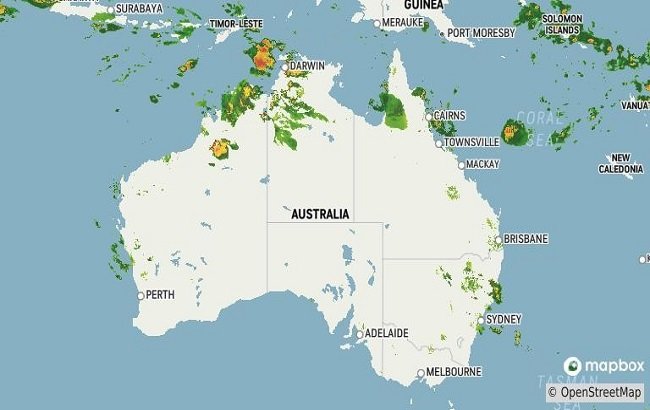Have you ever wondered how many fortnights in a year? If you’re like most people, you probably don’t think much about the exact number of fortnights in the year. But understanding this simple unit of time can help you organize your schedule, plan better, and even understand the intricacies of our calendar.
A fortnight is simply a period of 14 days or two weeks, and while this may seem like a small concept, it holds significance in many aspects of life. In this article, we will explore the number of fortnights in a year, how it affects our daily lives, and discover some surprising facts about this time measurement that you might not have known before. By the end, you’ll have a better understanding of how many fortnights in a year and how this simple time unit plays a crucial role in our everyday lives.
Let’s break it down step by step!
What Exactly is a Fortnight?
Before diving into how many fortnights in a year, it’s important to first understand what a fortnight is. A fortnight is a British English term used to describe a period of two weeks or 14 days. The word comes from the Old English “fēowertīene niht,” meaning “fourteen nights.” This term is still widely used in countries that follow British English, including the UK, Australia, and New Zealand.
The idea of a fortnight can be quite useful in organizing time. For instance, you may hear someone say, “I’ll see you in a fortnight,” meaning they will see you in two weeks. It is also used in business contexts, particularly in terms of pay periods, vacation time, and project management.
Now that we know what a fortnight is, let’s move on to the more interesting part: how many fortnights are there in a year?
How Many Fortnights in a Year?
The answer to this question depends on whether we’re looking at a standard year or a leap year. Let’s break it down.
1. Standard Year (365 Days)
In a standard year, we have 365 days. To find out how many fortnights fit into this, we simply divide the total number of days by 14 (since one fortnight equals 14 days):
365÷14=26 fortnights with 1 day remaining.365 \div 14 = 26 \text{ fortnights with 1 day remaining.}
So, in a standard year, there are 26 full fortnights, and you’ll have 1 extra day remaining. That’s the additional day in the calendar year that doesn’t fit neatly into the 14-day fortnight cycle.
2. Leap Year (366 Days)
Every four years, we have a leap year, which contains 366 days instead of the usual 365. Leap years have an extra day, February 29th. To calculate the number of fortnights in a leap year, we divide 366 days by 14:
366÷14=26 fortnights with 2 days remaining.366 \div 14 = 26 \text{ fortnights with 2 days remaining.}
So, in a leap year, there are also 26 full fortnights, but this time, there are 2 extra days remaining at the end of the year.
Conclusion on Fortnights in a Year
- In a standard year: 26 full fortnights, with 1 day remaining.
- In a leap year: 26 full fortnights, with 2 days remaining.
This simple calculation gives us an easy understanding of how many fortnights we have in a year. But why should this matter to us? Let’s take a deeper dive into some surprising facts about fortnights that might change the way you think about them.
Surprising Fact #1: The Extra Days and the Calendar Cycle
One of the most interesting aspects of fortnights in a year is how the extra days influence our calendar cycle. As mentioned earlier, there’s either 1 day (in a standard year) or 2 days (in a leap year) left after dividing the year by 14. This has a noticeable impact on the way weeks align from year to year.
For example:
- In a standard year, the extra 1 day causes the calendar to shift forward by one day. If January 1st falls on a Monday in one year, the next year will start on a Tuesday.
- In a leap year, the 2 extra days cause the calendar to shift forward by two days. If January 1st falls on a Monday in a leap year, the next year will start on a Wednesday.
This subtle shift in the calendar means that over the years, your schedules and the way weeks unfold will gradually change. It’s a fascinating way to think about the passage of time and how the days we experience can feel different depending on the year.
Surprising Fact #2: The Popularity of Fortnights in Australian Culture
In Australia, the term “fortnight” is more than just a quaint measurement of time – it’s a commonly used unit for both casual and formal conversations. For example, in Australia, people often discuss pay cycles, holidays, or events in terms of fortnights.
In fact, many Australian workplaces use the fortnight to organize their payroll system. Employees are often paid on a fortnightly basis, meaning their paychecks are issued every two weeks. This is incredibly convenient for budgeting purposes, and it’s a time structure that many Australians are accustomed to.
The idea of using fortnights to organize time is also prevalent in Australian social settings. You might hear someone say, “I’ll be in town in a fortnight,” or “I’ll catch up with you in a fortnight.” It’s a short, easy-to-understand unit of time that fits well into the rhythm of daily life.
Surprising Fact #3: Fortnights Are Great for Project Management
If you’re working on a big project, using a fortnightly schedule can be a great way to break down your tasks. A fortnight (14 days) is a manageable length of time that allows you to:
- Set clear goals for the two-week period.
- Track progress more frequently than monthly intervals.
- Make adjustments and keep tasks from piling up.
Project managers love the fortnight cycle because it provides consistent checkpoints throughout a project. Instead of waiting for an entire month to pass before evaluating progress, the two-week interval allows for quick evaluations and more effective adjustments.
This makes the fortnight ideal for team-based projects where coordination and quick feedback are essential for success. Whether you’re managing a small team or a large project, breaking things down into manageable two-week chunks will keep your team on track and focused.
Surprising Fact #4: The Role of Fortnights in Literature and Culture
While the term “fortnight” may seem like an everyday piece of language, it also plays a role in literature and popular culture. Authors and filmmakers often use this unit of time in their work to convey the passage of time in a way that feels both specific and relatable.
For instance, in many stories or novels, characters may agree to meet after a fortnight. The idea of a two-week period is long enough to feel significant but short enough to maintain tension and urgency in a narrative. This balance is one reason why fortnights are often used in storytelling.
In Australian culture, the fortnight has a special connection to tradition and history. It’s a part of daily conversation, as well as an important measurement for organizing everything from personal plans to professional schedules.
Surprising Fact #5: The Growing Trend of Using Fortnights
The use of fortnights is not only widespread in countries like Australia, the UK, and New Zealand but is also starting to gain popularity in other parts of the world, particularly in project management and even in personal budgeting.
The idea of budgeting and planning based on fortnightly intervals is gaining traction because it feels both structured and flexible. In some cases, people prefer using fortnights over months because:
- It’s easier to track progress.
- It fits neatly into the 14-day paycheck cycle.
- It provides regular check-ins without overwhelming people with long gaps of time.
By using fortnights, you break time down into digestible units that make it easier to see immediate results and adjust accordingly.
Conclusion: The Importance of Fortnights in Our Lives
So, how many fortnights in a year? We’ve discovered that in a standard year, there are 26 fortnights, with 1 extra day left over. In a leap year, there are also 26 fortnights, but with 2 extra days.
Whether you’re organizing your calendar, planning your projects, or thinking about how many fortnights in a year, understanding fortnights can give you a fresh perspective on time. It’s a simple yet effective tool for managing the passage of time, and it’s something that’s deeply rooted in both culture and practicality.
So, next time you’re planning something and need to think about time, remember the power of the fortnight. It’s more than just two weeks – it’s a neat, organized way to think about how many fortnights in a year and how we structure our lives. When considering your schedules, tasks, or even how to plan vacations, understanding how many fortnights in a year can help you stay on track and make time more manageable.
FAQs
1. What is a fortnight?
A fortnight is a period of 14 days, or two weeks.
2. How many fortnights in a leap year?
In a leap year, there are 26 fortnights plus 2 extra days.
3. Why do people use fortnights?
Fortnights are commonly used to manage time, plan projects, and organize pay periods.
4. Can I use fortnights to manage my projects?
Yes, fortnights are great for breaking large projects into smaller, manageable tasks with regular check-ins.


